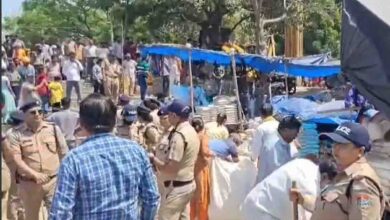10 years of Kedarnath disaster

Friday, 16 June 2023 | PNS | DEHRADUN
Progress achieved but lot needed to optimise disaster management: experts
As the State marks 10 years of the Kedarnath disaster of June 16-17, 2013 in which the death toll had surpassed 4,000, experts point out that the State is comparatively in a better position due to some developments but still a lot more needs to be done in the field of disaster management.Considerable work has been done as part of the Kedarnath reconstruction project and the number of pilgrims visiting the shrine has also increased substantially with more than 9.30 lakh having visited it so far this year. However, important aspects of disaster management need to be addressed seriously by the government, experts state.
The Uttarakhand State Disaster Management Authority (USDMA) executive director Piyoosh Rautela said that developments like the formation of the State Disaster Response Force (SDRF) have considerably improved the situation during disaster scenarios since 2013. He cited the recent incident which took place earlier this month on the route to Hemkund Sahib when pilgrims were buried after an avalanche. Timely rescue by SDRF personnel saved lives though one woman died in the mishap. He said that keeping pace with technological developments is always a challenge but the State has made considerable progress in the sphere of disaster management since the 2013 disaster.
Other experts point out that though the State has made progress in disaster management since 2013, unregulated tourism is an aspect which is not being addressed by the government. Raising public awareness and capacity building are also aspects where more needs to be done.
Founder of Social Development for Communities (SDC) Foundation, Anoop Nautiyal pointed out that though progress has been made in disaster management, a lot more needs to be done. The Joshimath subsidence disaster has elicited focus on the importance of carrying capacity but this is being ignored by the authorities. “In the 2022 Char Dham Yatra, the government first put a limit of 38,000 pilgrims per day then revised the limit a few days later to 42,000. This year, the government initially put a limit of 47,500 pilgrims per day and then removed the limit altogether. Such shifting of the goalposts shows that strong resilience of the political leadership is vital. In my view it is an immature thought to try and set records in a manner which may increase the risk profile of the State and the visitors. Developments like setting up of the Doppler radar and earthquake early warning system have taken place in the State but a lot more needs to be done. Uttarakhand needs to follow the Odisha model of disaster management,” said Nautiyal.






